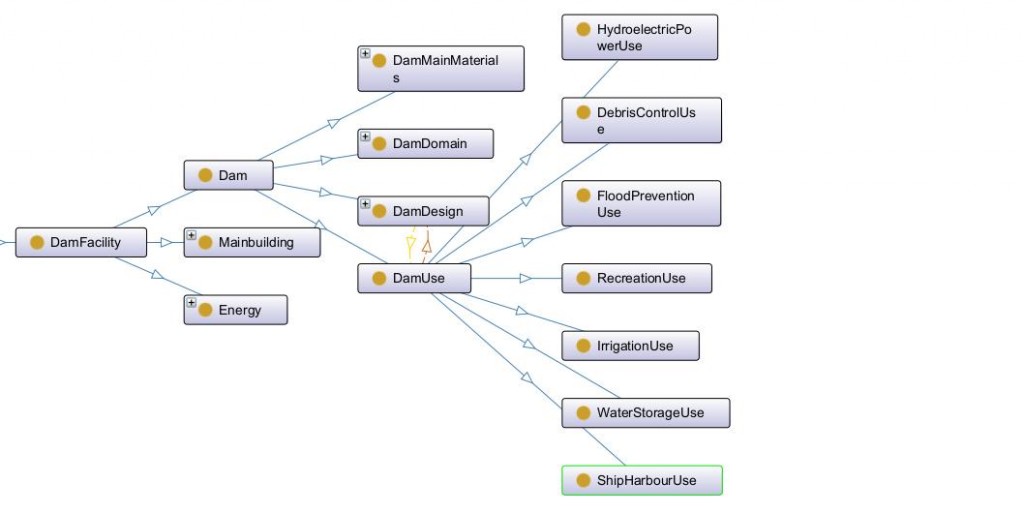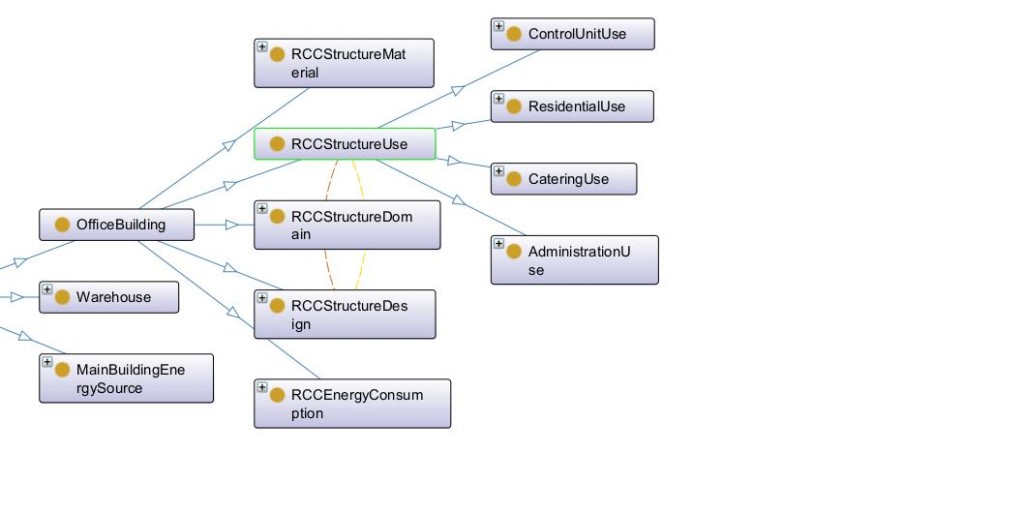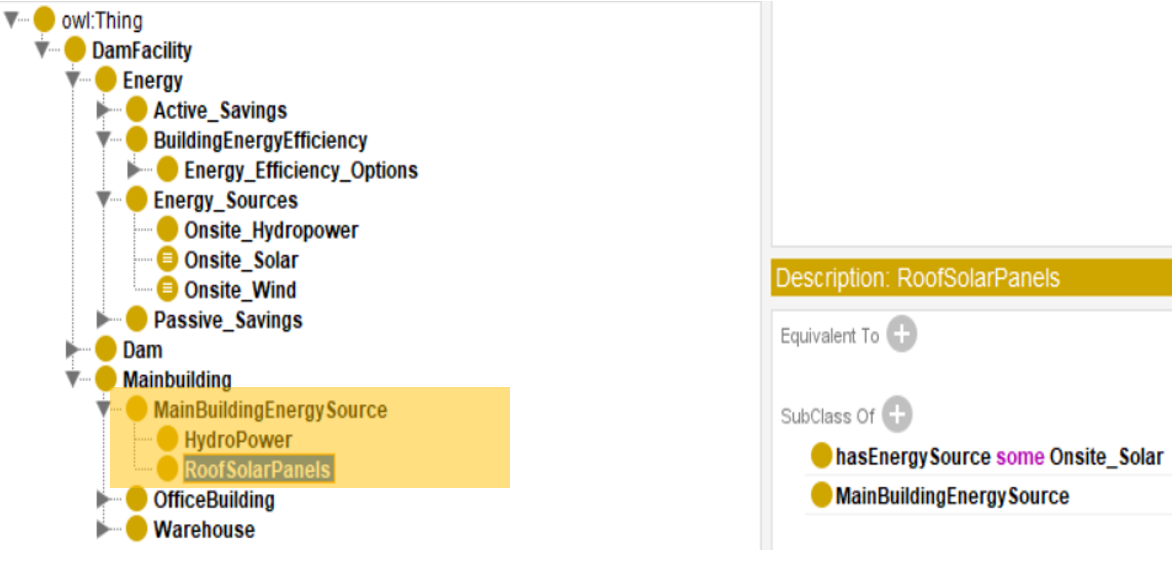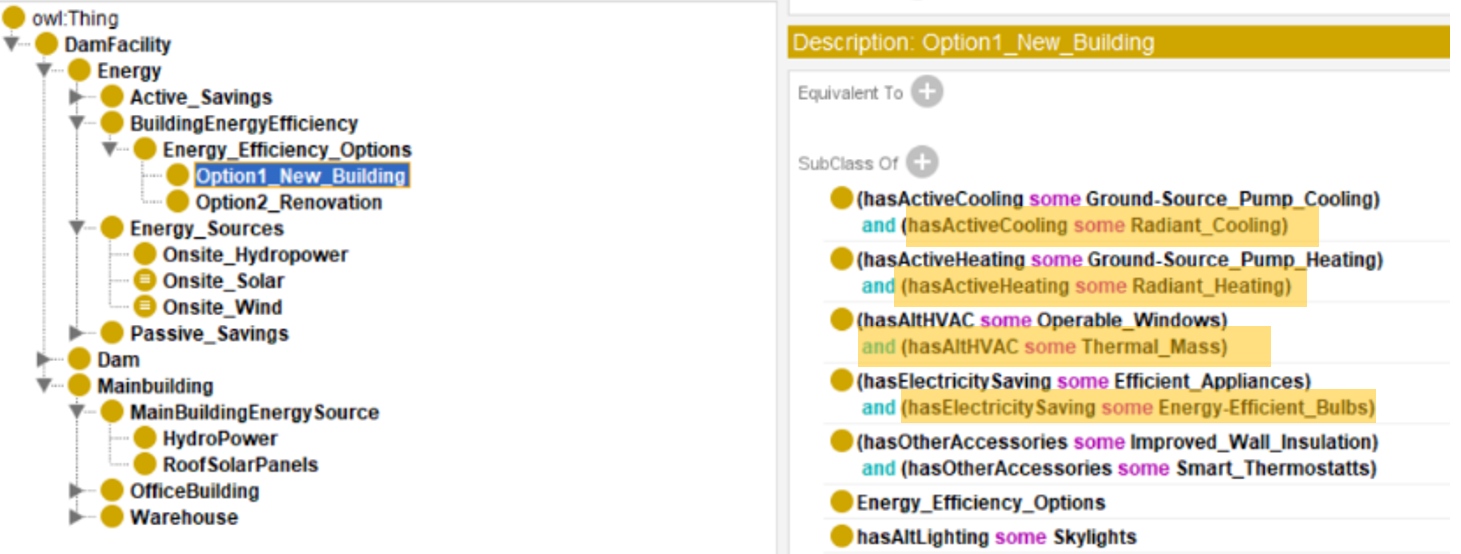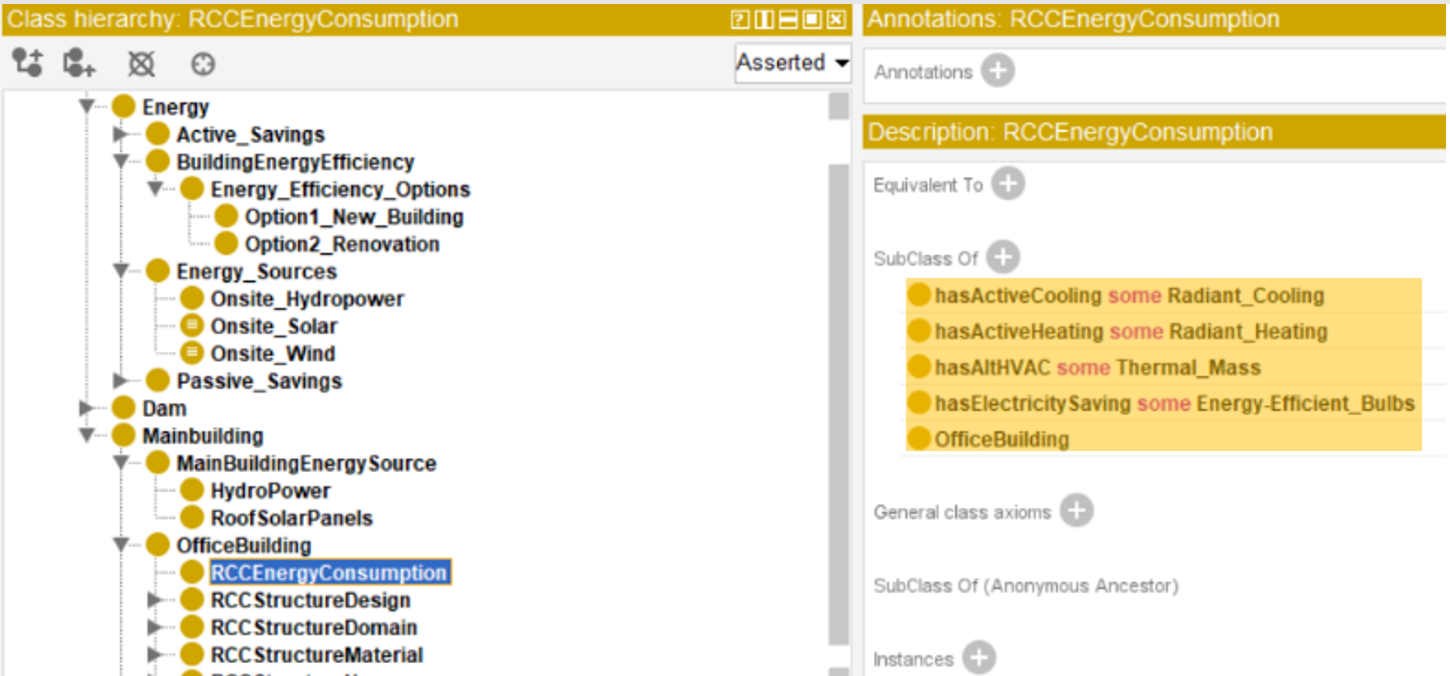Introduction
The combined ontology for the “Energy Efficient Dam Maintenance and Storage Facility” integrates the key elements and relationships from the ontologies of the hydropower dam, steel structured warehouse, RC office building, and energy efficiency system. This comprehensive ontology is designed to provide a unified framework for representing and organizing information about the facility’s components, functions, and interactions.
Developing an Ontology
What is the purpose?
The purpose of this ontology is to represent the structural requirements of the dam, RC building and the steel structured warehouse to provide structural reliability for these systems, in addition to providing a better energy behavior for the warehouse by applying the energy efficiency principles to the whole system, for instance, through consuming energy from the roof solar panels and the dam. Moreover, it provides information regarding the different inter-relationship between the different systems, their parameters, existing conditions and how they can be combined to develop an integrated design.
What is the scope?
This includes understanding how the dam generates hydropower, how the warehouse serves as storage for cargos related to the ship harbor function, how the office building supports administrative and residential purposes, and how to link and contribute all these systems to energy efficiency.
Engineering Challenge
Combining disparate ontologies from various systems into a single comprehensive framework for the “Energy Efficient Dam Maintenance and Storage Facility” poses several challenges and requires careful consideration and adaptation of the individual systems’ uses. We will explore the challenges encountered and the modifications made to integrate the hydropower dam, steel structured warehouse, RC office building, and energy efficient into a cohesive ontology.
One of the initial challenges was aligning the uses of the systems to enable seamless integration within the new facility concept. In the traditional context, the hydropower dam serves solely for energy generation, while the warehouse functions independently for manufacturing. However, reimagining the uses of these systems was imperative to facilitate their adaptation to each other.
Transforming the dam into a multifunctional facility that doubles as a ship harbor with integrated storage capabilities required redefining its operational scope. Similarly, repurposing the warehouse to include in it a RC building to form our “main building” to accommodate office spaces and residential areas demanded significant modifications to its original design and function.
Another challenge was that the energy ontology primarily focuses on energy generation, consumption, and efficiency measures specific to building structures and not for systems as hydropower dams or warehouses. To address this challenge, we incorporated the hydroelectric power generated by the dam into the energy source class within the energy ontology.
Fig.1
Additionally, we added a subclass called “Energy Source” to the “Main Building” class within the ontology, representing the primary source of energy for the facility. By explicitly defining the energy source as a subclass, we were able to capture the connection between the hydropower dam’s energy generation and solar panels energy generation and its utilization within the facility’s energy-efficient systems.
Fig.2
Furthermore, we introduced detailed and different classifications for energy consumption within the warehouse and office building components of the facility, which were already identified in our energy ontology. This involved identifying and categorizing various types of energy consumption, including lighting, heating, cooling, and equipment usage, within each building structure.
Fig. 3,4
Finally, to bolster the interconnectedness of the ontology, object properties and sub-classes were employed to link classes across different ontologies. The data properties within the unified ontology are pivotal in detailing the geometric attributes of the diverse elements constituting the integrated urban system. This led to a more coherent and structured ontology, facilitating comprehension of information and data pertaining to the integrated urban system.
Fig.5
Importance of the integration
The unified framework for the “Energy Efficient Dam Maintenance and Storage Facility” yielded several benefits. By adapting the uses of the systems and integrating their ontologies, we created a versatile and sustainable facility that maximizes energy efficiency, optimizes space utilization, and enhances operational functionality.
Who are the intended users?
- Design and Construction Professionals: Architects, structural engineers, and construction managers involved in the design and construction of similar facilities can use the ontology to inform their design decisions, incorporate energy-efficient features, and ensure compliance with regulatory requirements.
- Regulatory Agencies: Government agencies responsible for regulating the construction, operation, and safety of energy infrastructure, such as dam safety authorities and environmental protection agencies, can use the ontology to assess compliance with regulatory standards, conduct inspections.
- Environmental Scientists and Researchers: Professionals involved in environmental impact assessments, sustainability studies, and research related to renewable energy and infrastructure development can use the ontology to analyze the environmental implications of the facility’s operations, identify areas for improvement, and assess its overall sustainability.
Fig.6 complete ontology
Downloadable Content
You can reach our full ontology by clicking:combined_final_ontology

